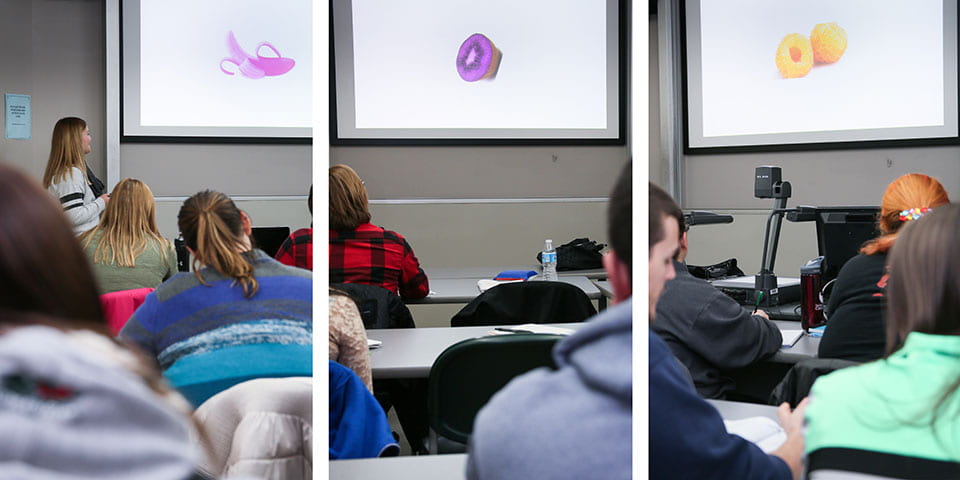Psyched up for presentation day: ‘Methods’ class turns students into researchers

UW-Green Bay’s Research Methods in Psychology class is a crucial part of the psychology curriculum that teaches students — usually in their sophomore or junior year — about the scientific basis for psychological knowledge.
At UW-Green Bay, students learn by doing. In fact, every psychology student is expected to complete an entire research project and present his or her research in a public forum. This year that forum takes place from 3 to 4:30 p.m. Friday (Dec. 11) when about 20 student teams will present their research at a poster session in the atrium of Mary Ann Cofrin Hall on campus.
“Students have the unique opportunity to complete an entire research project from start to finish,” explains Prof. Georjeanna Wilson-Doenges, one of two instructors (with Christine Smith) teaching the class.
That includes generating the idea, gettting Institutional Review Board (IRB) approval, designing the methodology to collect data, actually collecting data from participants of our participant pool called the Experiential Research Learning Program, analyzing that data, writing a full APA-style research paper, completing an oral defense and, finally, presenting their research at the end-of-the-semester Research Methods in Psychology Poster Session.
“Every psychology major must take this class and so every psychology major has this terrific experience,” Wilson-Doenges adds.
For their research project, students McKenzie Roskom, Gina Denardo and Kelly Petersohn did a variation on one of the most cited experimental psychology studies ever published, commonly called the Stroop Effect (after the author John Stroop).
The original Stroop study tested participant reaction time with the names of colors printed in ink congruent to the word (like the word orange printed in orange ink) and incongruent (like the word orange printed in green ink). Stroop found what he called semantic interference, which states that naming the ink color was faster when the word and the ink color were congruent than when they were incongruent.
“These Research Methods in Psychology students came up with a variation on this study (pictured this page) looking at correctly and incorrectly colored fruits and vegetables, and how that affected memory,” says Wilson-Doenges. “Participants were shown a series of 15 fruits and vegetables either correctly or incorrectly colored, and were asked to recall as many as they could. Consistent with the Stroop Effect findings, these student researchers found that participants remembered significantly more when the items were correctly colored.”
This is just one example of the depth of research attendees will be able to discuss with student researchers at the Dec. 11 gathering.
“This class is really an amazingly powerful experience for students to see research come to life,” Wilson-Doenges said. “The poster session is the culmination of all of their hard work throughout the semester in adding to the knowledge base of psychology.”
Click to advance slideshow or view the album on Flickr.

– Photos by Dan Moore, Marketing and University Communication






